Overall Evaluation
Chief Judge
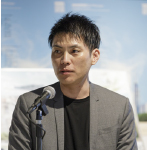 |
Shohei Shigematsu OMA Partner/Director of OMA New York Despite the COVID-19 crisis, I think we have been able to enjoy a very meaningful competition. In addition, with my familiar hometown of Fukuoka on the stage, as the chairperson of the screening committee, I had the valuable experience of discussing various proposals with the fine members of the screening committee through freely exchanging ideas and thoughts. Many of the applicants made proposals that have an independent program or a participatory program reflecting user feedback, from which I sensed their intention to change society one way or another. It is quite difficult to convey this through architecture, but I find it is a very positive trend. At the same time, the next challenge for you will be to make your proposals more realistic. I want you, even in competitions, to be seriously aware of whether your ideas can be implemented in a society that you will be involved in the future. At the stage of formulating an idea, there may be no architecture and business viability in it, but I believe that continuing to think and endeavor will eventually change the concept of architecture and development and the way to design a city. Since the competition started amid the COVID-19 crisis, both the applicants and the judges might have had a hard time, but in order to maintain the enthusiasm and accumulation of ideas we have gained through discussion, I would very much like opportunities such as this competition to continue to be provided. I have realized that through aggressively trying to reflect various social changes in cities and architecture, we can create something new. I really had a wonderful time that gives me reason for hope. |
Judges
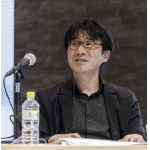 |
Masataka Baba President, Open A Ltd. / Professor at Tohoku University of Art and Design Since there were various problems to be tackled, where to put the focus became a major factor for both the proponents and the judges. As a result, in the screening, we expansively discussed what kind of questions are raised against current society in each work, while mixing in a certain degree of expanded interpretation. This was an idea competition, but since the organizer displayed its seriousness about earnestly pursuing a near future vision of Fukuoka, the works that provoked discussion about why the proposed landscape is really necessary in this place – and what methodology is available to realize that – were ranked high. However, I was kind of frustrated that I could not find sufficient enthusiasm to realize an exciting future by meticulous business viability and technology at any cost. |
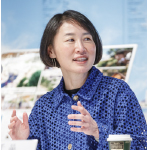 |
Chiaki Hayashi Co-Founder of Loftwork In this screening, we were asked what the post-pandemic architecture should be like. We, the members of the screening committee, have not found the answer yet, so I think it was very difficult for you, the applicants, to find clues leading to your proposals. Actually, from your proposals, I could see that you don't want to be bound in the framework of architecture, but that you still haven't found what you really want to do. Still, I think that you can become more aware that the story can begins with one person you know, and not with a "consumer" that you have never seen before. Since an architect is a person who can solve challenges, even if you yourself do not have problems, there is likely someone close to you who has problems, and you can make a proposal that will start to be developed from one person but have large potential. I was fascinated by the group that presented Workick-City Momochi, which was selected for the highest award, and it was impressive that they clearly expressed their idea, saying: "The structure is a prototype and will continue to be updated." That reminded me that the days of consuming whatever things architects think are good is over, and that now we are entering an age when people continue to make proposals and the concept of architecture will continue to change accordingly. At the same time, the family, which has been serving as the basic unit of society, is now gradually becoming invisible. I feet this work has given us an opportunity to think about what will serve as a central axis connecting people. |
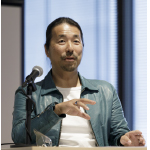 |
Michiaki Matsushima ditor-in-Chief of WIRED JAPAN We have been able to conduct this screening meeting online, which itself gave us an opportunity for us to think about what is required of architecture in the 2020s. In the context of technology, the word "architecture" is often used as a wide-ranging term that includes the structure of society, people's lives, politics and so on, so I want to focus attention on how tech companies will design "architecture." Through these submitted works, I was able to renew my awareness that architecture is something beyond simply designing buildings, and is widely open to society. With that in mind, how to manage empty spaces was brought up as one of the topics, but I believe how architecture can enhance people's independence will become an important subject in our time. In that sense, in Workick-City Momochi, which was selected for the highest award, micro mobility vehicles (highly independent kick scooters) were placed in the center of the open city, which I appreciated. This gave me an opportunity to once again think about what open architecture really is. |
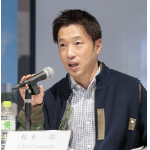 |
Ichiro Enomoto President and C.E.O, Fukuoka Jisho Co., Ltd. Now that the centripetal force of city centers has weakened due to the COVID-19 crisis, I feel that the existing concept of development is in a back-to-zero state, and we all are at the stage of competitively putting ideas out from scratch. In other words, it has become possible to send messages to the world with the same impact wherever you are, whether in Marunouchi or Momochi in Fukuoka, and to make proposals about urban development whoever you are, whether a company president or a student. In this context, the proposals presented in the competition made me feel that there is a limit on the idea of building a tower and putting houses and offices inside. It is a desire for the contact with the outside, not only through one side, through a window, but through a 360-degree contact surface. Without centripetal force, even Workick-City Momochi, which won the highest award, will not work out, nor will it spread to the entirety of Momochi. As for what will be the centripetal force for that, I think the answer has not been found in the proposal at this point. What or who will constitute the centripetal force – a university laboratory or a charismatic person? And what will attract people? Let's think about such matters together. Thank you very much. |


